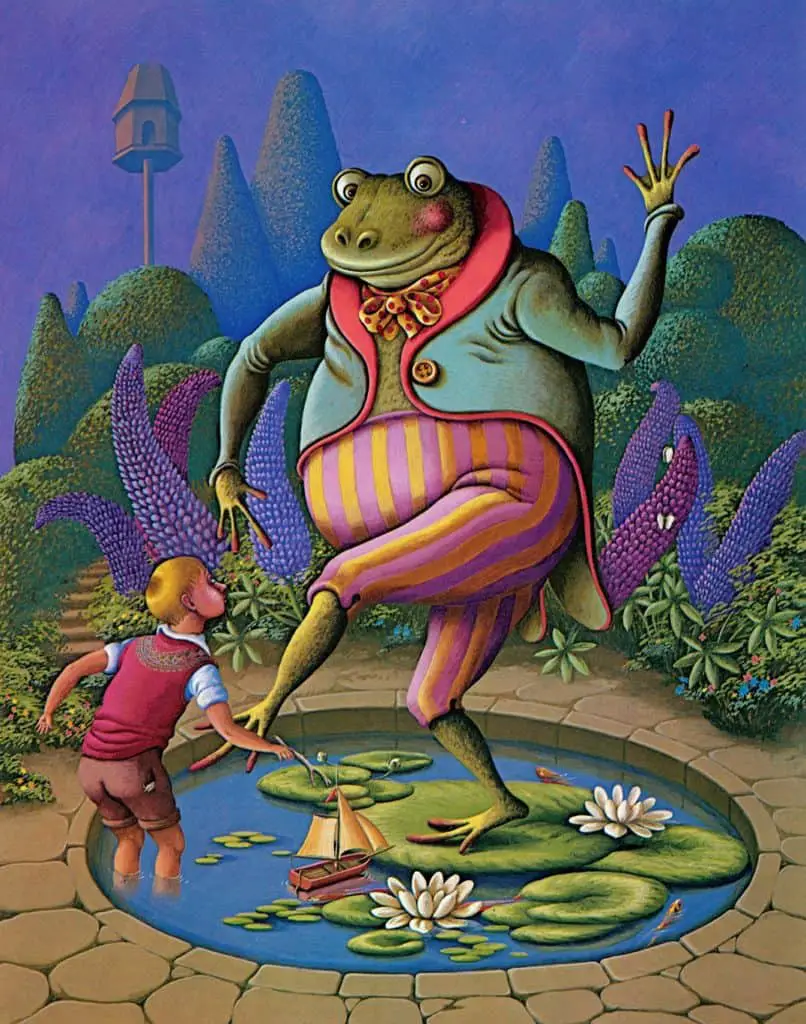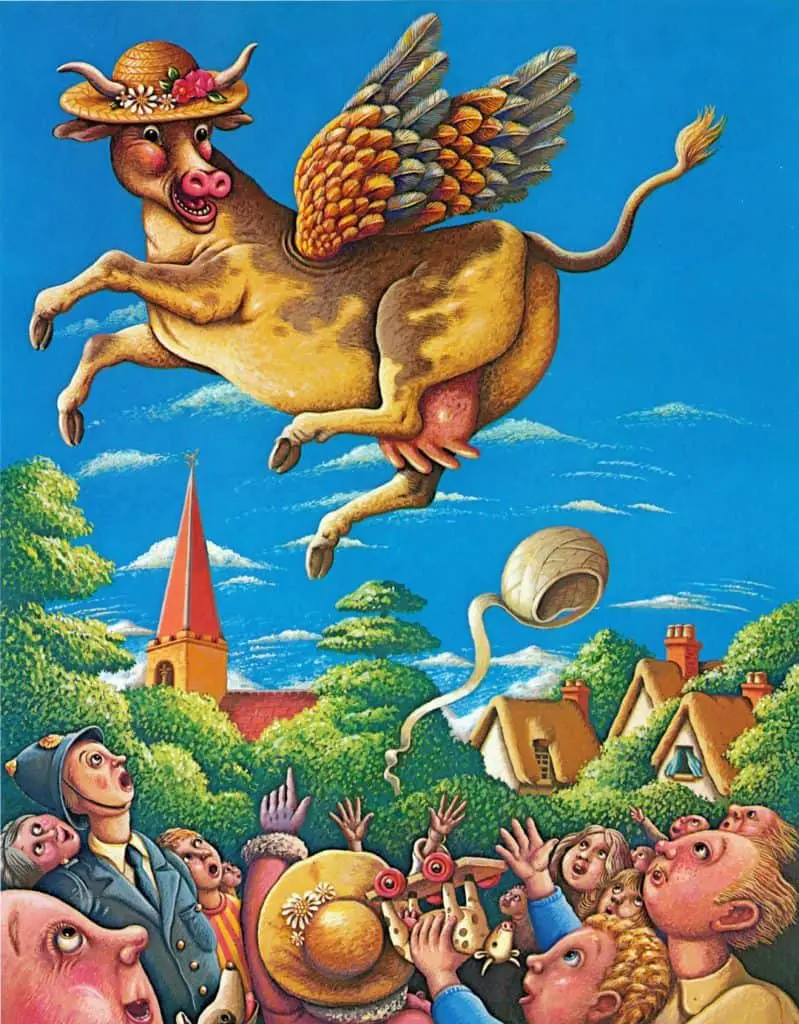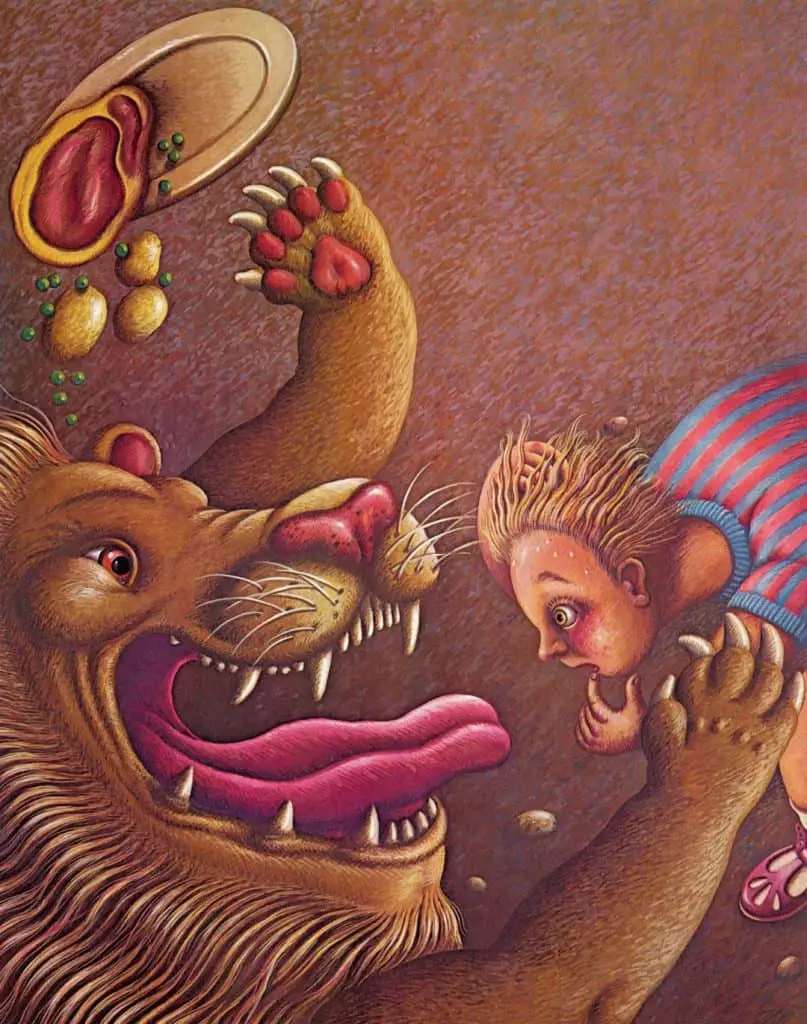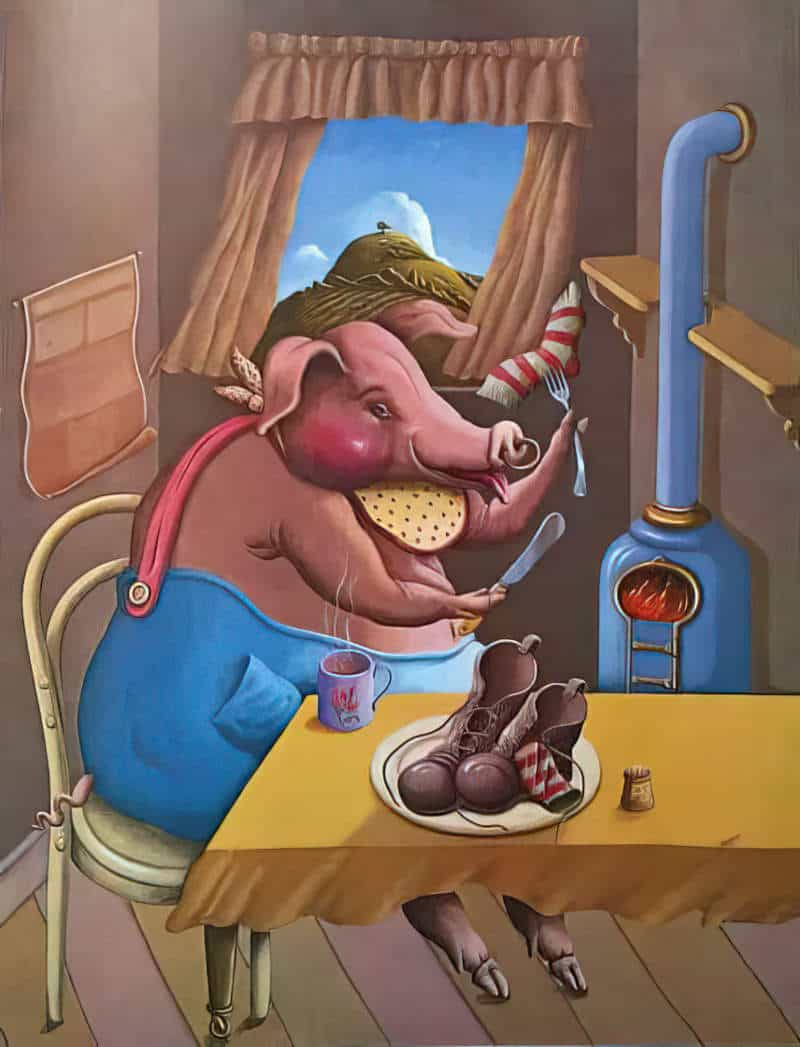Roald Dahl’s work wasn’t always illustrated by Quentin Blake.
Dirty Beasts, for example, was originally illustrated by a young woman new to the field, Rosemary Fawcett. The edition she illustrated is now out of print. Jeremy Treglown explains the story in his biography of Roald Dahl:
To one British critic, Russell Davies, “the buzz of misanthropy from Roald Dahl grows stronger.” Candida Lycett Green [another British children’s author] rightly said there was nothing new about this mood: she saw the first poem, in which a pig forestalls its destiny by turning on the farmer and eating him, as a version of the macabre, much earlier story “Pig”, in which a boy brought up as a vegetarian ends up in an abattoir. She thought that Dahl’s imagination was well illustrated by Rosemary Fawcett: “The nastiness of her pictures is exceptional.” This was meant as a compliment, but not everyone saw things this way. There couldn’t be a bigger contrast than between Quentin Blake’s benignly funny sketches and the giddying, lurid, surrealistic images Rosemary Fawcett produced. Her cover picture sets the tone: a child in bed with a teddy bear, both of them bug-eyed with terror at the sight of something positioned above and behind the viewer’s head. It is the perspective that is often most violent in these images—that, and the colors. For “The Tummy Beast,” Fawcett threw the greedy child over so that he is somehow flying, upside down, all chubby knees and protruding eyeballs, beneath a gaudy tableful of purple and mauve blacmanges and ice creams. And in “The Porcupine” the reader is made to peer, as if through a keyhole, onto a murky scene, lit by a single lamp, in which a goggling dentist waves his gigantic pointed pincers over the little girl’s much spiked rump.
Fawcett does more than justice to Dahl’s ferocity, but not to his humor or his underlying traditionalism. Dahl himself hated the drawings. He said he couldn’t face giving the book to any of his relations and offered to incinerate all the unsold copies and dance around the bonfire. Many of the British reviews warned that Fawcett’s pictures would give children nightmares, and this was the general opinion in the States, where the children’s librarians were in full squeamish cry: “Sadistic, predictable and unfunny”; “From stem to stern this is a gross, course [sic] unpleasant book.” The edition didn’t sell badly in Britain, but although, according to Murray Pollinger, Tom Maschler swore by Fawcett’s work, the illustrations were unpopular with Continental publishers. Revolting Rhymes, meanwhile, had sold over 100,000 copies in Britain alone. So Fawcett’s Dirty Beasts was eventually allowed to go out of print, and Quentin Blake was brought back in for the new edition.
There’s no doubt about it; they wanted a young woman because she was cheap. Blake was already fetching good money and had a good job as an illustration lecturer. Also in those days — even more than today — men were paid more than women for the same work.
I’m sad to find very little about Rosemary Fawcett on the Internet these days, which may mean, sadly, that when her illustrations were completely replaced by those of Quentin Blake, she may have become too dispirited to pursue in the picturebook industry. (I know that’s how I would have felt, at least for a while.) I can’t find another work illustrated by a Rosemary Fawcett.
Or perhaps she got married and continued an ‘illustrious’ career under another name? This is something I’d love to know. What happened to the talented Rosemary Fawcett, whose wonderful work was ill-suited to Dahl’s creepy rhymes through no fault of her own?




